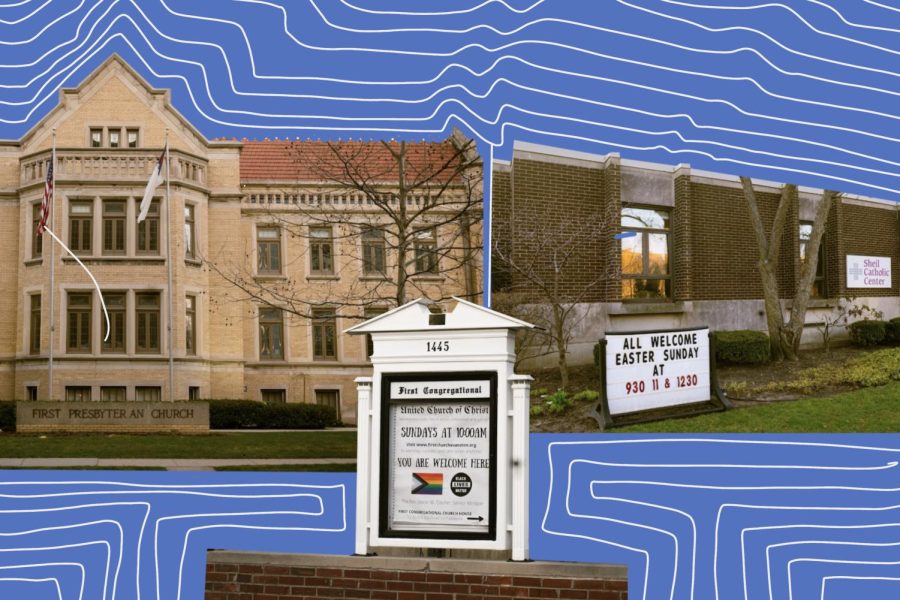How Evanston became the ‘City of Churches’
Shveta Shah/Daily Senior Staffer
Evanston is home to about 100 places of worship, according to archives from Evanston Public Library.
May 24, 2023
When someone takes a jaunt through Evanston’s suburban streets, a steeple is usually visible in the skyline. Evanston has earned the name “City of Churches” for good reason: a religious space sits on nearly every street corner.
The Evanston Public Library keeps a record of nearly 100 active places of worship in the city — a testament to Evanston’s continued religious presence.
Evanston’s religious roots are tied directly to Northwestern. According to University Archivist Kevin Leonard, NU’s founders wanted to establish a higher education institution with affiliations to the Methodist Episcopal Church. University founders provided land for free or at nominal cost to encourage locals to build churches, Leonard said.
That land came from John Foster, who sold his 379-acre plot to NU founder John Evans. Foster had inherited it from his brother, who took over the land after the Black Hawk War. Settlers took the plot and surrounding lands from Indigenous people, including the Potowatami.
NU fourth-year Ph.D. candidate in Native American and U.S. History Heather Menefee said NU founders wanted to create a separate community from Chicago because they thought the urbanized area had “rough crowds.”
“They chose a location 13 miles north of there that fit with their ideology of white civilization and purity and godly goals,” Menefee said.
The founders’ hope was that organized religion in a suburban town would create a positive environment to surround the University, Leonard said.
First United Methodist Church of Evanston, on Church Street, was founded in 1856 as Evanston’s first church. Later, Baptist, Congregationalist and Episcaplian churches popped up. But, Evanston’s first official religious institution sits right on NU’s campus — the Garrett Biblical Institute.
The Evanston Index, a community newspaper that ran from the late 19th century into the early 20th century, listed active churches in their issues. The publication included the African American congregations Ebenezer African Methodist Episocopal Church and Second Baptist Church in the 1880s, both located on Benson Avenue.
After the Great Chicago Fire in 1871, Evanston’s population grew, as did the volume and diversity of religious spaces.
The population at the time was primarily Methodist and Protestant, Leonard said. Other denominations could worship, but Catholics were a notable minority, he added.
“The (founders) wanted, in effect, a holy sanctified city here through the presence of churches,” Leonard said. “The influence that those churches would have on the community through the sale or lease of land to like minded individuals, who would be interested in a morally upright community.”
Other religions developed places of worship starting around the mid-20th century. Leonard said there were not populations substantial enough to support congregations previously.
“It’s not that there was a barrier to other religions or denominations setting up shop here, but you’re not going to set up shop here unless you have a population to support it,” Leonard said.
Email: lexigoldstein2026@u.northwestern.edu
Twitter: @lexipgoldstein
Related Stories:
— Ebenezer AME Church’s original home at 1813 Benson Ave. named new African American heritage site
— Mount Zion Missionary Baptist Church celebrates 125 years with prayers, song, food
— First Congregational Church of Evanston celebrates 150 years in Evanston



